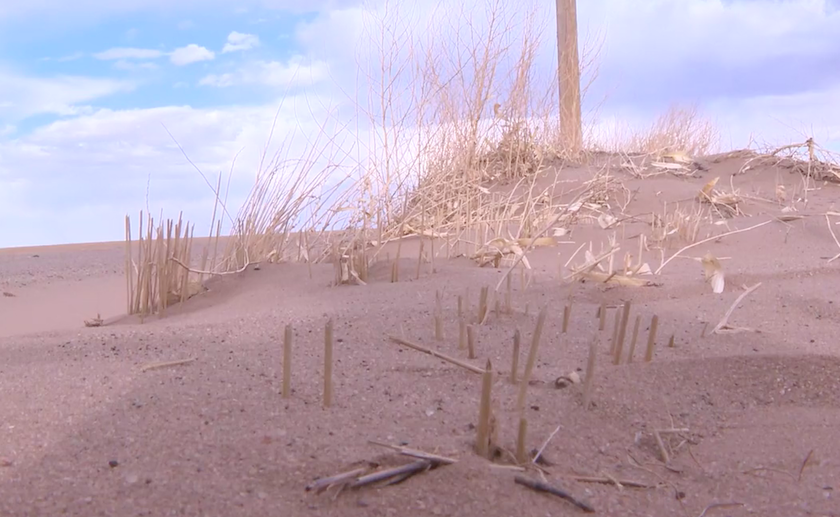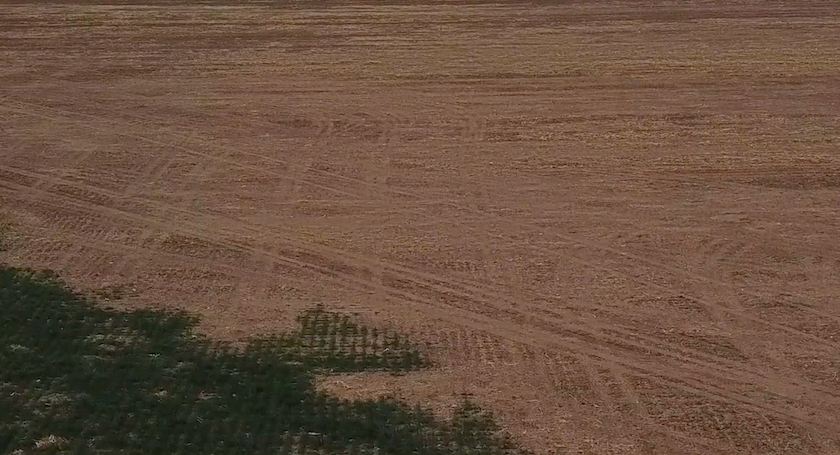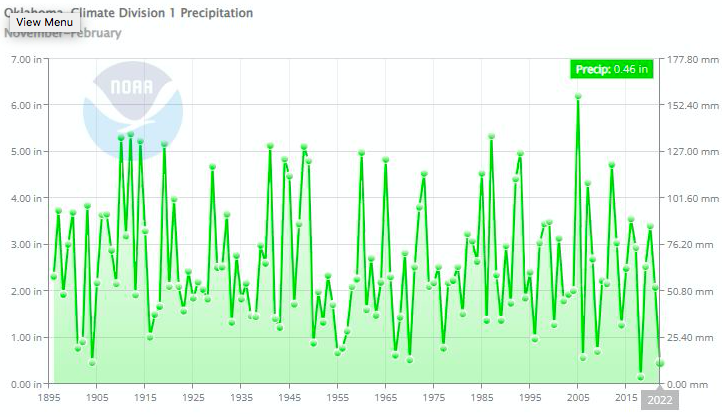Drought Robs Colorado Farmer's Wheat, Now it May Be Too Dry to Plant Corn This Spring
USFR- Colorado Drought FJR 4.1.22
Colorado farmer Brian Brooks will be the first to tell you farming in the southeast corner of the Centennial State isn’t for the faint of heart.
“You can see the wheat is trying and barely hanging on the roots,” says Brooks, a farmer in Baca County, Colo. “You can just tell how abusive this winter has been.”
Brooks farmer says Baca County is the epicenter of the Dust Bowl, and in an area used to arid climate, he says this winter has been nothing short of brutal.
“The last big rain event we had it was in August,” says Brooks. “There are a few guys that got wheat up when they planted early, but the dryness took it.”
Robbed of Wheat
He thinks 80% of the dryland wheat in this area may not make it this year, with some acres of fall planted wheat still barren. That’s as only a trace of moisture has materialized since fall. It’s been too dry for many wheat fields to even sprout.
“We've had four-tenths of moisture this year so far, and a lot of it has come as a half of one-tenth here and there, just no large margin,” he explains. “We've had a lot of wind and it just been very destructive on everything.”

Brooks is one of many farmers facing a bleak picture in the Southern High Plains, as the lack of moisture this winter has been historic.
“If you look at the November to February period, it’s the second driest on record behind only that of 2017/2018,” says Brad Rippey, USDA meteorologist, “It's just another year that we've experienced in a string of very difficult years going back to the mid-1990s.”
This map shows the ranking of moisture this winter, with areas of the Texas High Plains and southeast Colorado seeing the driest November through February on record.
“There's an area of five states, centered on the Oklahoma Panhandle, obviously extending into New Mexico, Texas, southwestern Kansas and southeastern Colorado, that some people are terming the new Dust Bowl location,” Rippey says. “That is because of the preponderance of the drought, the wind and the temperature swings, blowing dust wildfires that we've seen.”
From drought to wind, it’s been a lethal combination for winter wheat, and this year wheat fields in the area bear the scars of just how brutal Mother Nature can be.
“If you look at Texas, currently more than 80% of the winter wheat crop is rated in very poor to poor condition,” says Rippey. “Conditions are only marginally better as you head northward through Oklahoma, into Kansas and Colorado.”

Too Dry to Plant
Brooks is in an area of Colorado seeing the worst of it.
“We've even had wind events of 50 mph to 60 mph winds, and after, the road graders have to come out and push the sand off. It's drifting up kind of like what snow does,” says Brooks. “I mean, it's a challenge this year. This is one of the driest years we've had since 2011.”

With only a trace of moisture since last fall, it’s not just the winter wheat crop causing concerns to sprout. Brooks says plans to plant this spring are growing dimmer by the day.
“We’re praying for rain, and hopefully things turn around here and we can get our corn or milo in,” he says. “It's going to take quite a bit of moisture to get that done. If not, we're going to be looking at prevent plant.”
Irrigated acres could still see a crop in this area, but high input costs are just adding to the pain.
“Input prices are crazy,” says Brooks. “Last year, we were buying anhydrous for $420 a ton. I got a bid yesterday, and it was $1,350 a ton for anhydrous. That’s pushed our corn up another 24 bu. per acre just to breakeven price. That’s huge.”
With drought already settled in, Brooks knows the likelihood of him seeing yields above average is average is extremely slim.

As the cards seem to be stacked against producing a record-breaking crop here, Brooks says 70% of this area probably won’t get planted this year, as it’s just too dry. And while farmers in the Southern High Plains are desperately searching for rain, the forecast for moisture isn’t promising at this point.
“The outlooks do not look good, because we are facing the La-Nina-driven storm track that takes the storms to the north of this region,” says Rippey. “That leaves the area with just a lot of wind and only scattered rain showers or snow showers, not much in the way precipitation.”

Far From Record Net Farm Income
Commodity prices have been strong the past few months, and Brooks’ local elevator is offering historic prices to grain farmers. As for Brooks, he doesn’t have wheat to sell.
“Right now, we have $10 wheat,” says Brooks. “We're all pumped, but we have none. We sold out. I made money at $8.50, but this $10 wheat, we've not been able to grow it. It's disappointing.”
The disappointment is hitting from every angle, but Brooks is trying to remain optimistic about the year ahead. Still, he’s having to come to grips with the reality of historic input and grain prices with a drought that seems to be doing everything it can to ensure this area doesn’t see a crop this year.
“They’re forecasting, record profits for farmers. It's not going to happen at all here,” says Brooks. “If we need to raise two or three times what we do normally, it's not going to happen with this drought.”








